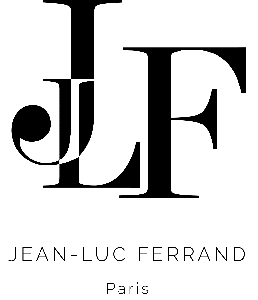Questions ? ![]() : +336.087.843.37 |
: +336.087.843.37 | ![]() contact3@jeanlucferrand.com | Buyer's Guarantee
contact3@jeanlucferrand.com | Buyer's Guarantee

Contact us and request a quote!
![]() : +336.087.843.37
: +336.087.843.37![]() : contact@jeanlucferrand.com
: contact@jeanlucferrand.com
![]() Shipping prices vary regarding destination. Contact us.
Shipping prices vary regarding destination. Contact us.
![]() 14 days free returns. Check out our: Terms and Conditions
14 days free returns. Check out our: Terms and Conditions ![]() |
| ![]()
![]() Question ? Call us +336.087.843.37.
Question ? Call us +336.087.843.37.
Pair of lacquered wood Pompeian style consoles with lion ornament, late 19th century
Pair of brown lacquered wood Pompeian style console with a stylized lion protome leg standing on a square base. The leg is composed of a lion head, curly hair and mouth open, supported by a bulged protome adorned with large and curved acanthus leaves topping a lion paw.
Apron adorned with a carved wood greek waves frieze. Gilt highlights on the lower part of the base and greek waves.
Rectangular upper tray in brown Baltic granite.
Italian work, probably Roman, realized in the 19th century.
Good condition, wear consistent with age and use.
The shape of those consoles is inspired by a leg pattern found during the Pompeii excavations, both in the first one in 1768 and also with the following in the late 19th century.
Indeed, in some Pompeii houses (see Cornelius Rufus’ House, INHA) supports for tables and console were found, called trapezophorum and were regularly in shape of bulged lion protome standing on a lion paw, or also in griffon protome: back-to-back or separated; in bronze or in marble. Monsters had an important place in the decorative art workshops and the several excavations of Pompeii renew the taste for those ornaments from the late 18th century. This decorative patterns are also visible, reworked, in the Directoire, Consulat or Empire style and also during the Napoleon III period. (See The Pompeian House built by Alfred-Nicolas Normand for the French prince Jérôme Napoléon, inaugurated in 1860).
Sources (FR & IT):
F. Coarelli, « Trapezoforo » in Enciclopedia dell’Arte Antica, Instituto della Enciclopedia Italiana, 1966 URL = http://www.treccani.it/enciclopedia/trapezoforo_%28Enciclopedia-dell%27-Arte-Antica%29/
G. Sauron, « Les monstres, au coeur des conflits esthétiques à Rome au Ier siècle avant J.-C. » In: Revue de l’Art, 1990, n°90. pp. 35-45. URL = https://doi.org/10.3406/rvart.1990.34786
G. Sauron, « Les enjeux idéologiques de l’art ornemental à Rome » in La ville de Rome sous le Haut-Empire : nouvelles connaissances, nouvelles reflexions, Pallas et Presse Universitaire du Mirail, Toulouse, 2001, pp.91-106
Out of stock
Contact devis transport / delivery costs :
Telephone / By Phone : +33(0)6 08 78 43 37
Additional information
| Dimensions | 84 x 72.5 x 47 cm |
|---|---|
| Period | |
| Material | |
| Style |














